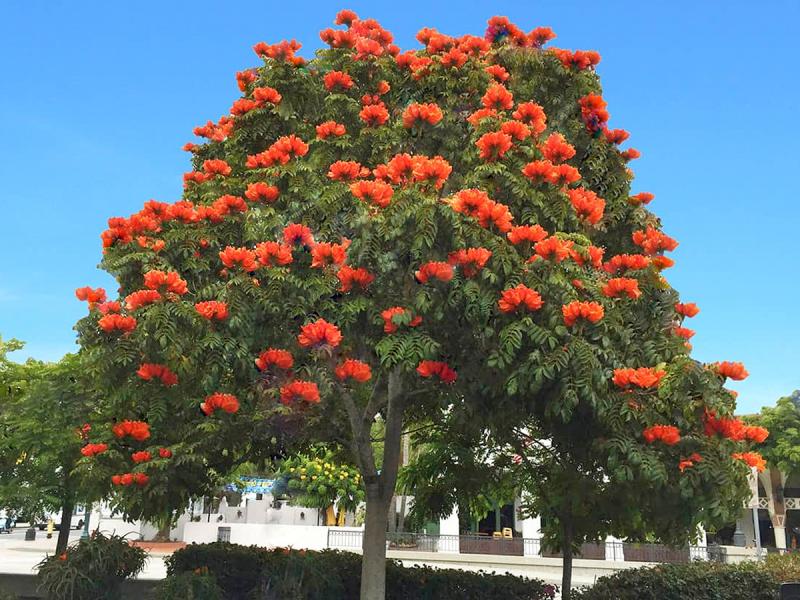We think of Daniel Boone as a folksy aw shucks kind of guy who could barely read or write. However, Daniel Boone was raised by Quaker parents, and was an avid reader who routinely brought along books on his hunting expeditions. Indeed he was many times the only one in a group who could read and write. He often entertain his fellow frontiersmen by reading aloud to them around the campfire.
Besides being a literate woodsman, Daniel Boone was also a boat-builder and chose for his 60-foot dugout canoe a tall native American tree with buoyant trunks and stunning flowers, the Tuliptree (Liriodendron tulipifera). This tree is sometimes confusingly called “Yellow Poplar” even though Tuliptree is in the magnolia family, and not a poplar at all.
A fast growing tree, this is the tallest of all of the eastern hardwoods, eventually reaching 100 feet tall or higher. These are long-lived trees. The Tuliptrees that George Washington planted at Mount Vernon are 140 feet tall, and still going strong hundreds of years later.
In May and June, the trees bloom with namesake beautiful light greenish yellow tulip-shaped flowers streaked with orange, providing bees and ruby throated hummingbirds with one of the first big nectar harvests of the season.
The bright green leaves change to a warm golden yellow in fall.
In traditional medicine the Tuliptree has many uses. The very bitter inner bark, in particular from the roots, is used as a tonic and stimulant.
Tuliptree roots are used to add an almost lemon flavor to spruce beer, as well as correct the spruce beer's bitterness. You can add the very nicely scented roots and bark to potpourris or added to a wood fire to scent the air. The bark is also used to make a gold fabric dye.
The light, fine-grained wood is easily worked, and even though it is not particularly strong, it does not split, so is valuable for making cabinetry, musical instruments, furniture as well as general construction.
The tree begins life growing in a pyramidal shape, gradually changing to a more oval crown as it matures. Even though the flowers are quite large, they often go unnoticed on larger trees because the flowers bloom after the leaves have sprouted.
Tuliptree are large, so make good trees to plant in public parks or big yards. They are hardy in USDA zones 4 to 9.
Plant your Tuliptree in full sun in just about any soil-clay, loam, sandy even moist soil as long as it is well-drained. They will tolerate some light shade.
The flowers develop into scaly, cone-shaped brown fruits, each fruit containing many winged seeds.
In the fall the leaves turn to a brilliant gold. The inconspicuous fruit stays on the tree well into winter, feeding birds, squirrels and other wildlife.
For several lifetimes of beauty plant a Tuliptree, and in a few years this fast-growing American classic will give you shade to stretch under, bark for spruce beer, and read one of Daniel Boone's favorite books, “Gulliver's Travels,” and think of your Ol' Kentucky home.




















































